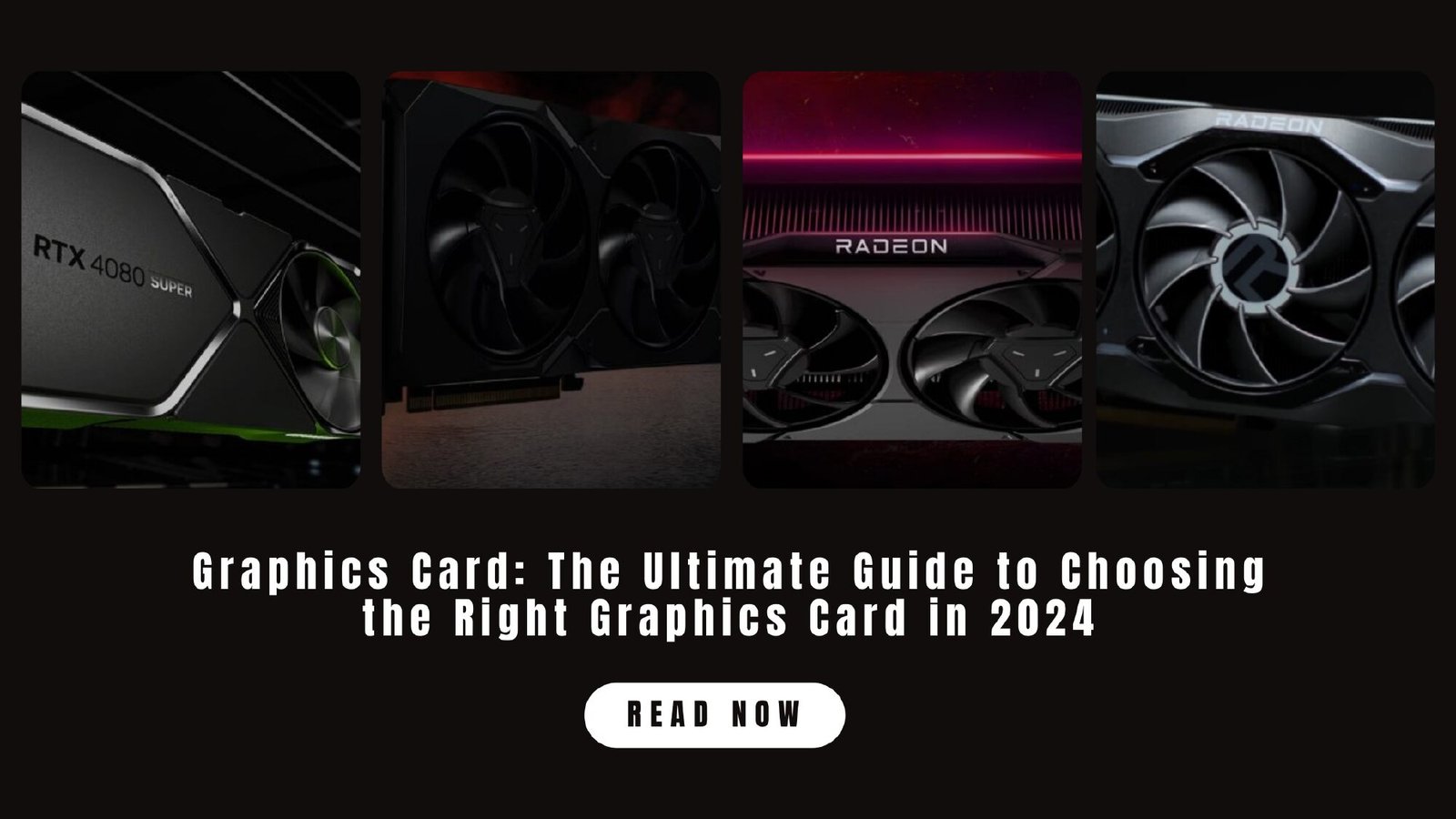In 2024, the GPU market is thriving with innovation, making it an exciting yet challenging time for gamers, streamers, and creative professionals. With options from industry giants like Nvidia and AMD, and new contenders like Intel, picking the right graphics card can feel overwhelming. But don’t worry—this guide will help you navigate the process and choose the best GPU for your needs.
Understanding Your Needs
Before jumping into the various options, it’s important to clarify what you need from a graphics card. Here’s what to consider:
- Budget: Graphics card prices vary widely. High-end models can go beyond $1,600, while more affordable cards can cost as little as $200. Establish your budget early to narrow down your options.
- Resolution and Frame Rate: The resolution (1080p, 1440p, 4K) and frame rate (FPS) you aim for will dictate how powerful your GPU needs to be. Higher resolutions and faster frame rates require more robust performance.
- Games and Applications: Look up the recommended system requirements for the games or software you use the most. This will give you a good benchmark to compare GPUs.
- Special Features: Do you want features like ray tracing (which makes lighting more realistic) or DLSS/FSR (which boosts performance without sacrificing image quality)? These features are important for future-proofing your setup.
Graphics Card Contenders: Nvidia vs AMD vs Intel
The GPU market in 2024 is dominated by three key players:
- Nvidia GeForce RTX 40 Series: Nvidia’s cards are known for their incredible performance and advanced features like DLSS 3.0, which enhances game visuals and performance. However, these cards tend to be on the pricier side.
- AMD Radeon RX 7000 Series: AMD offers strong performance at more competitive prices. The RX 7000 series features solid ray tracing and excellent value for money, making it a popular choice for budget-conscious gamers.
- Intel Arc A-Series: Intel is relatively new to the GPU space, but their Arc A-Series GPUs provide promising performance at budget-friendly prices. While the drivers are still being refined, these cards are worth considering for their price-to-performance ratio.
Matching Your Needs to the GPU
To make your decision easier, let’s break down some of the best GPUs for various types of users:
1080p High Refresh Rate Gaming
- AMD Radeon RX 7600: This is a fantastic value card for gamers focused on high frame rates at 1080p. It handles most games smoothly, providing excellent bang for your buck.
- Nvidia GeForce RTX 4060: Another solid option for 1080p gaming. With DLSS technology, it boosts performance in demanding games while maintaining crisp visuals.
1440p High-Fidelity Gaming
- AMD Radeon RX 7800 XT: This card strikes a good balance between power and price, delivering smooth 1440p gameplay and solid ray tracing capabilities.
- Nvidia GeForce RTX 4070 Super: Known for its excellent 1440p performance, the RTX 4070 Super also comes with DLSS for enhanced visual quality and frame rates.
4K Ultra Settings Gaming
- AMD Radeon RX 7900 XTX: If you’re aiming for the best 4K gaming experience without breaking the bank, this GPU delivers top-tier performance with ray tracing and ultra settings.
- Nvidia GeForce RTX 4090: For those who want the ultimate in 4K gaming power, the RTX 4090 is unrivaled. It handles even the most demanding games at maximum settings, but it comes with a hefty price tag.
Content Creation and Professional Work
- Nvidia GeForce RTX 4080 Super: A great choice for creative professionals, this card excels in rendering, video editing, and 3D modeling, offering a powerful mix of gaming and professional-grade performance.
- AMD Radeon RX 7900 XT: For content creators, the RX 7900 XT is a fantastic alternative to Nvidia’s offering, providing strong raw power at a slightly lower cost.
Beyond the Big Three: Additional Considerations
- VR Gaming: If virtual reality is on your radar, ensure your GPU meets the specs for headsets like the Oculus Quest 2 or HTC Vive Cosmos. Higher-end GPUs generally provide a smoother VR experience.
- Power Consumption and Cooling: High-end graphics cards demand more power and often require additional cooling solutions. Ensure your PC’s power supply and case have enough capacity to support your chosen GPU.
- Availability and Pricing: The GPU market can be volatile, with prices fluctuating due to supply and demand. Keep an eye on deals and price drops using online tools or from reputable retailers.
Optimizing Your Graphics Card Performance
Once you’ve chosen and installed your GPU, you’ll want to make sure you’re getting the best performance possible. Here are a few tips:
- Update Drivers: Regularly updating your GPU drivers ensures that your card runs at peak performance and stays compatible with the latest games and software.
- Monitor Temperatures: Overheating can limit your GPU’s performance. Keep an eye on its temperature, and make sure your case has adequate airflow or invest in better cooling if necessary.
- Adjust Graphics Settings: Games often provide multiple graphics settings. Experiment with different settings to find a good balance between visuals and performance that suits your GPU and system.
Conclusion
Picking the right graphics card is an investment in your gaming or creative experience. By understanding your needs, researching the latest GPUs, and considering your budget, you can make an informed decision that’ll keep your system running smoothly for years to come. Remember, the best graphics card for you isn’t necessarily the most expensive—it’s the one that meets your unique needs and fits within your budget.
If you found this guide helpful, share it with anyone you know who’s also searching for the perfect GPU! And if you’re planning a full PC build, check out our other guide, “The Ultimate Guide to Building a Budget Gaming PC in 2024,” for even more insights. Happy gaming!


